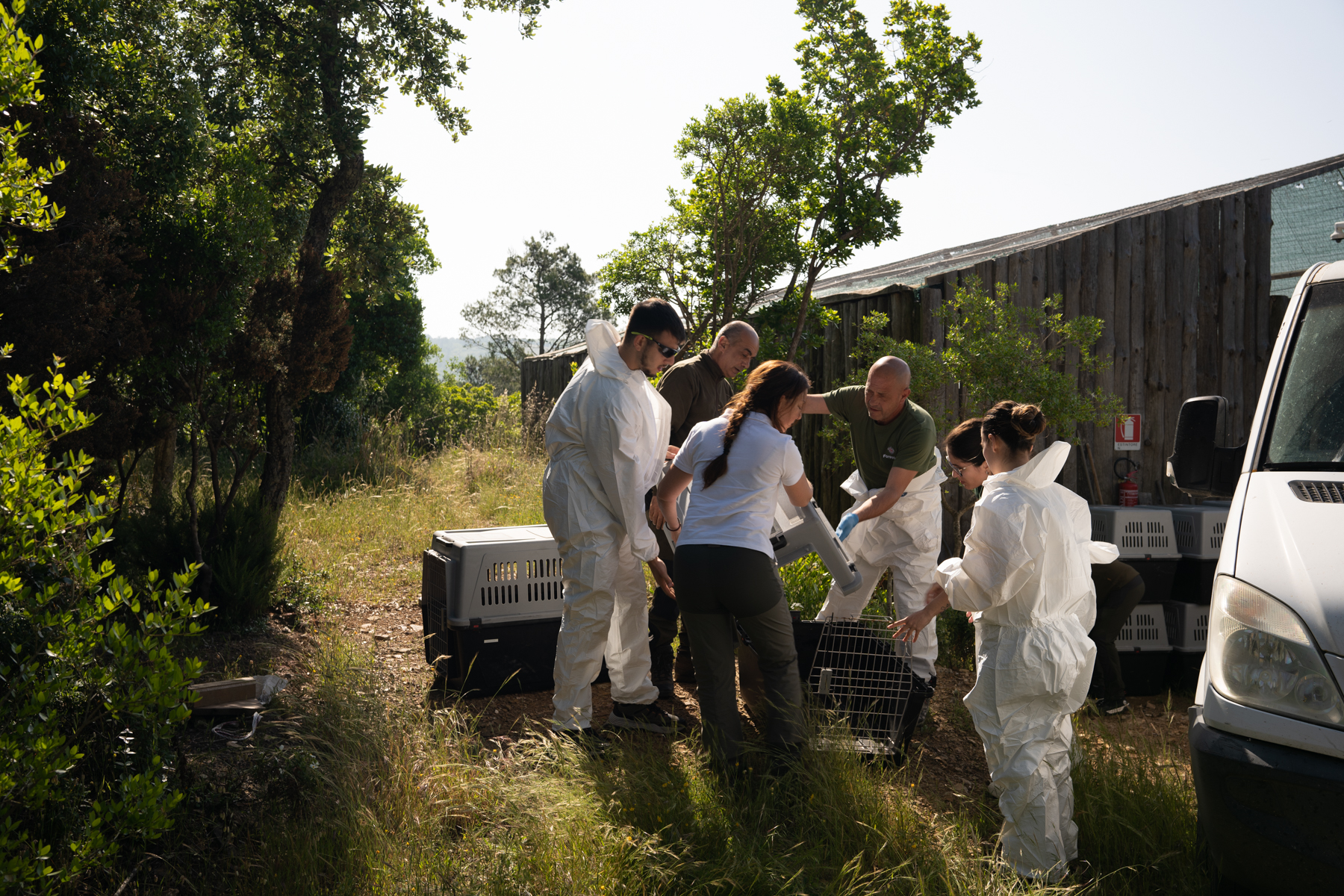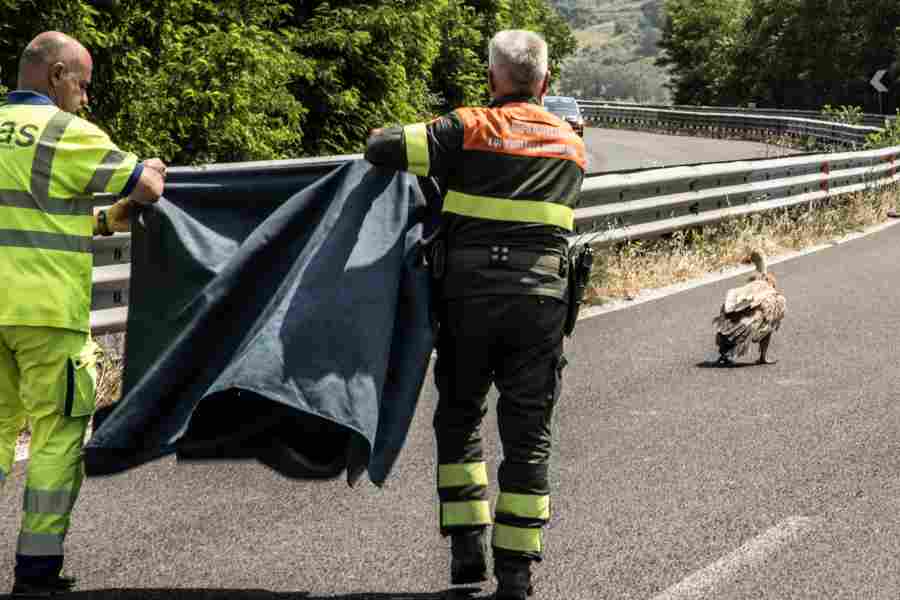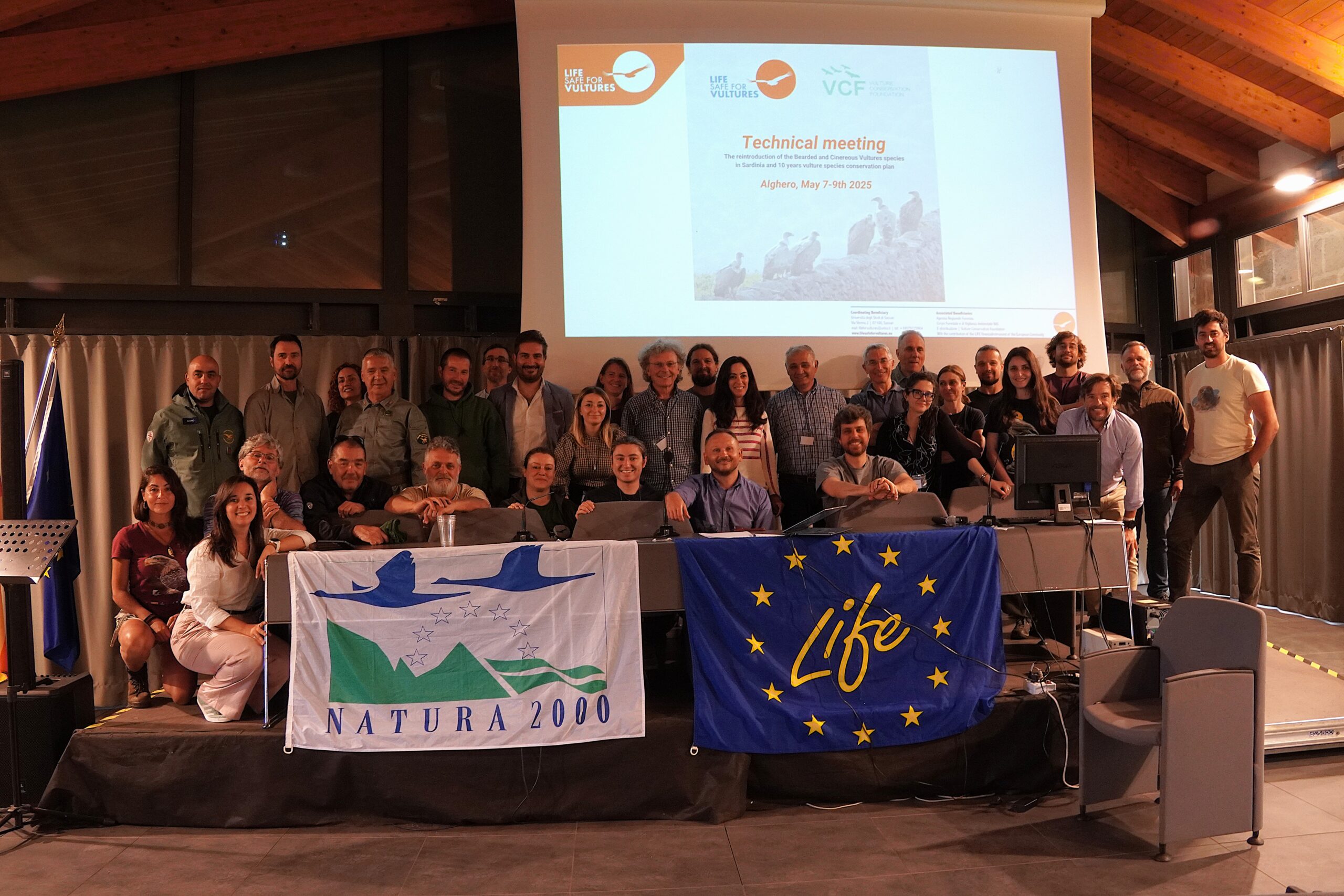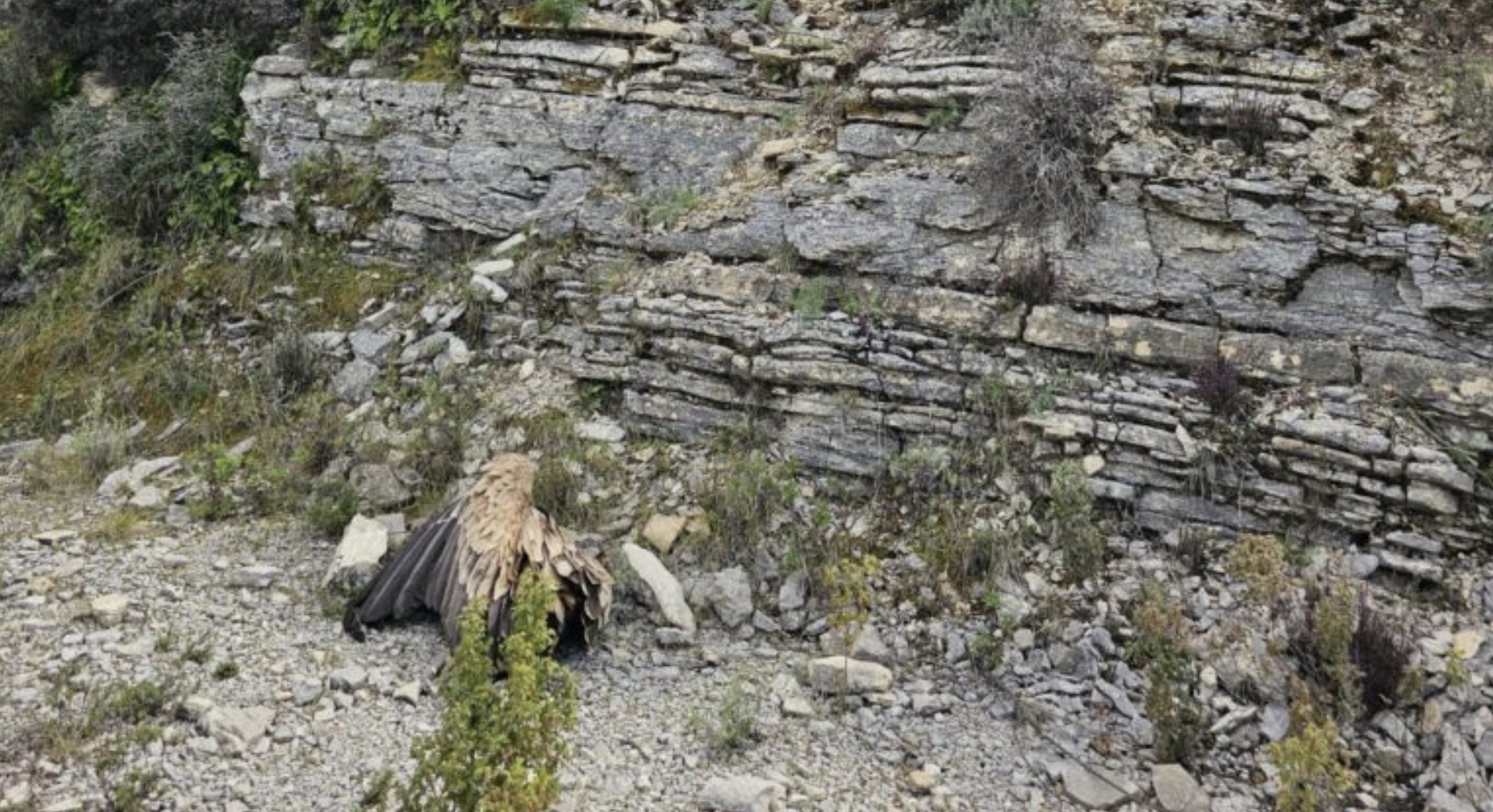
Following last summer’s success, this year’s fledging of 62 young vultures represents another milestone for the ongoing LIFE Vultures project and rewilding in Bulgaria’s Rhodope Mountains as part of the LIFE Re-Vulture project.
Griffon vultures breeding
Vulture chicks hatch at the end of March and early April. They are then raised by their parents for nearly four months until they are ready to fly, taking to the air for the first time around 140 days after birth. By the middle of summer the young vultures typically weigh about seven to eight kilogrammes; while they are not quite as heavy as their parents, they are the same size, and have all their feathers (although the colouring in juvenile vultures is different to adult birds).
First flights
While the first young vulture take-off was observed in the region of the Studen Kladenets Reservoir in the middle of July, some birds left their first attempt at flight until later in August. Vulture chicks are often seen practising flapping their wings while they inhabit nesting ledges. When the wind picks up they often open their wings to “feel” the flow of air – this may be a way of learning how to use the wind when they eventually do take to the skies.
In the first few weeks of tentative flight young vultures usually stay close to their nests. They refine their flying skills, learning how to use their wings to take advantage of air currents.
Critical time for Griffon vultures
The young birds are still inexperienced, they fly only a short distance, they can not use the hot air currents to raise their height, and the landing on the rocky edges can be a real catastrophe. The highest is the risk of injuries because of a clumsy landing when the vultures can injure their wings. This is particularly risky when nests are near water such as the nests in the valley of the Arda River were falling into the cold fast flowing water can result in death by drowning or hypothermia and exhaustion.
Griffon vultures in the Balkans

Once home to four species of vultures, due to illegal wildlife poisoning, changes in farming practices and habitat loss the populations of each of the four species of vultures in Europe has drastically declined with the regional extinction of the bearded vulture. Griffon vultures have the largest population of the three remaining species of vultures, with around 600 pairs, but these are small and isolated. 30 years ago the Griffon vulture in Bulgaria was on the verge of extinction, with only few couples kept in the Eastern Rhodopes. Today, the number of Griffon vulture in the Eastern Rhodopes has reached 94 pairs.
LIFE Re-Vultures
Starting in 2016, the five-year LIFE RE-Vultures project was developed by Rewilding Europe, in collaboration with the Rewilding Rhodopes Foundation, the Bulgarian Society for the Protection of Birds and us here at the Vulture Conservation Foundation along with a range of other partners. The aim of the project is to support the recovery and further expansion of the cinereous and griffon vulture populations in the Rhodope Mountain by improving natural prey availability, and by reducing mortality through factors such as poaching, poisoning and collisions with power lines.




